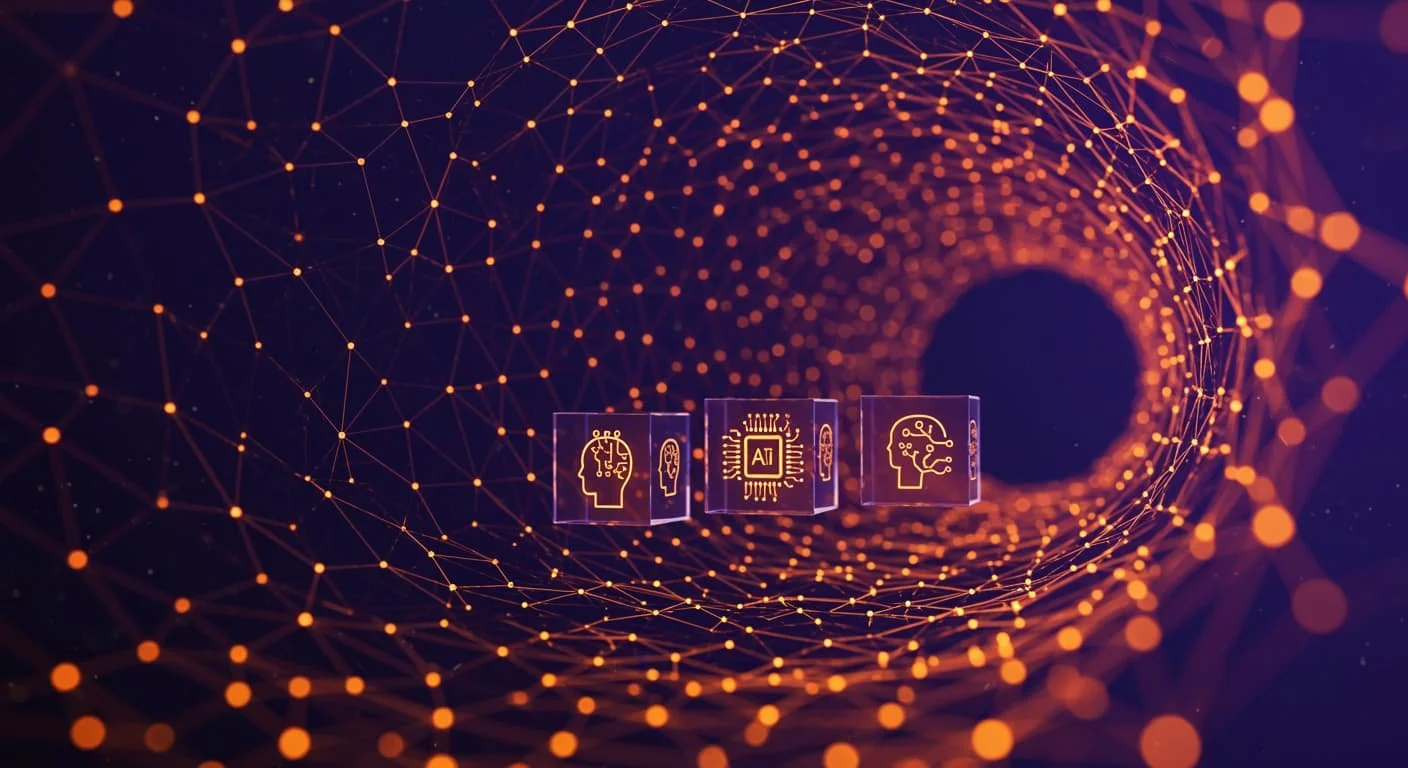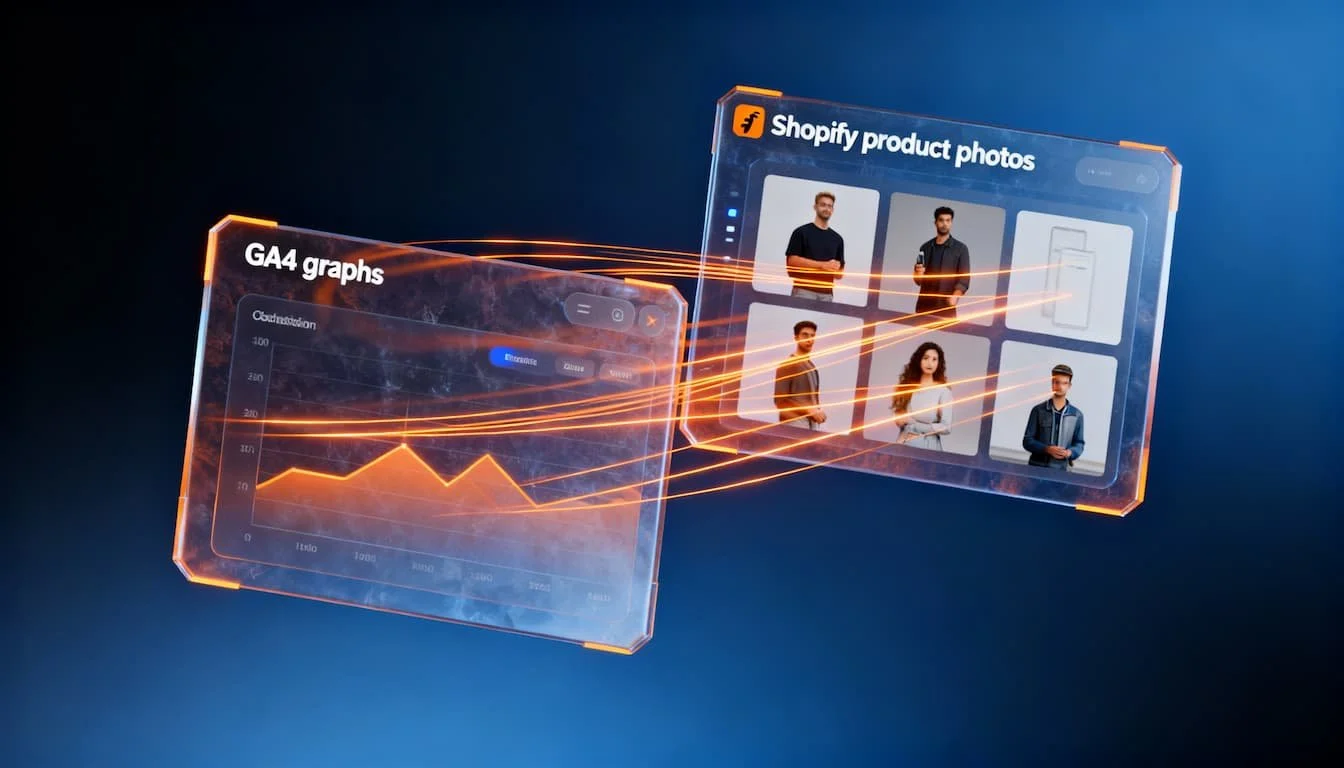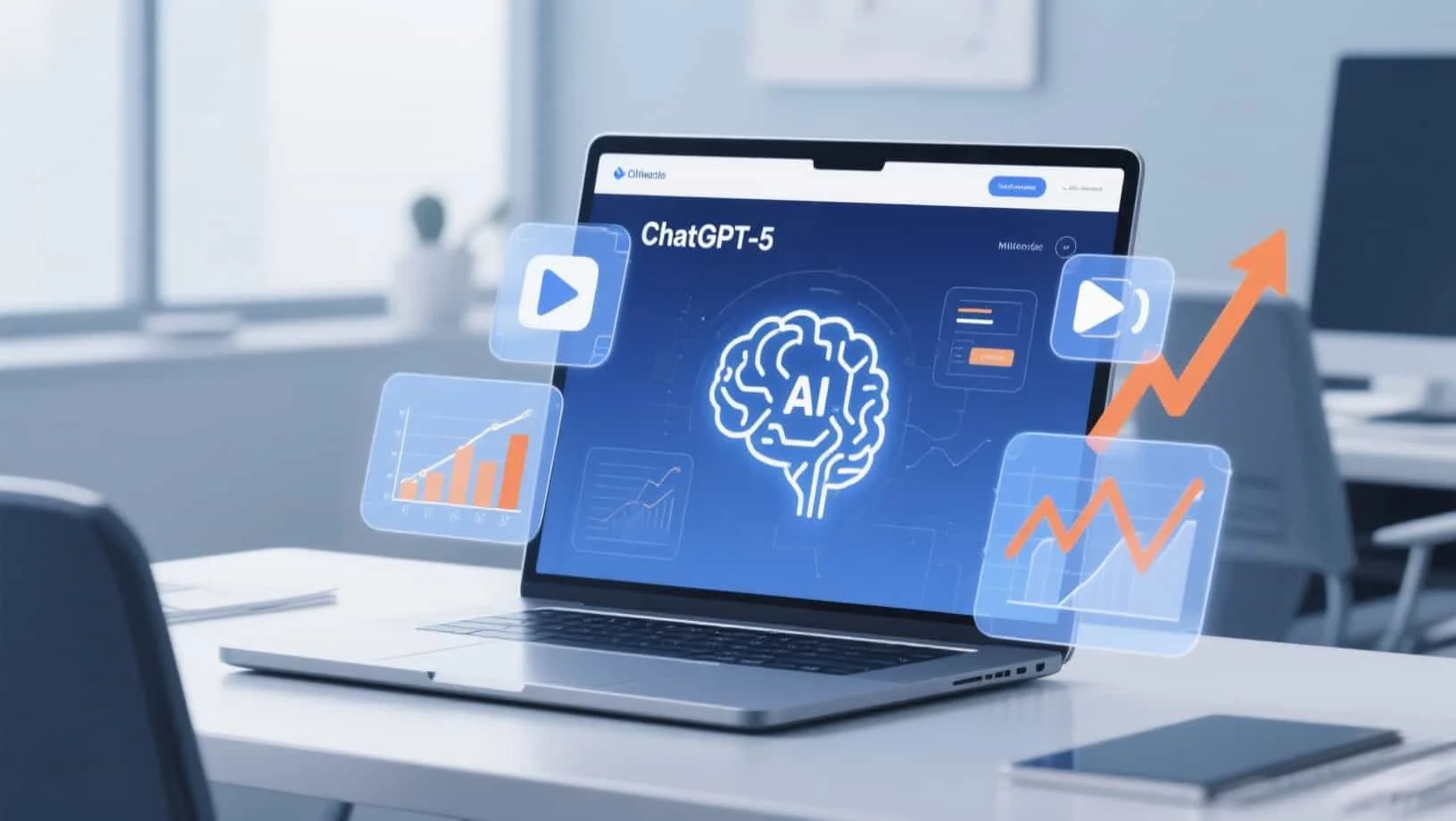Advertising strategy 2026: how AI transforms your marketing funnel
The traditional marketing funnel is dead. Long live the 360-degree customer journey that consumers actually go through in 2026. Where we used to talk about linear steps from awareness to conversion, we now see a complex dance between online and offline touchpoints, AI-driven personalization, and real-time decision-making.
- Funnel into practice: Translate AIDA/TOFU-MOFU-BOFU theory into concrete advertising strategy
- Barker principle: First shout loudly (awareness), tell a story (interest), irresistible offer (action)
- 3-layer campaign structure: Awareness (reach), Consideration (traffic), Conversions (purchases)
- Cost-efficient order: Start at the top of the funnel; conversion ads cost more than reach ads
- Catalog sales integration: Show products from your webshop catalog for direct sales generation
- Case-specific approach: Test different strategies to determine the best result for each situation
Time to fundamentally revise your advertising strategy.
Why the classic funnel fails in 2026
Recent data from Salesforce shows that 87% of B2B buyers and 73% of B2C consumers experience non-linear customer journeys. They might start with a TikTok video, search further on Google, read reviews, consult friends via WhatsApp, and ultimately buy in a physical store.
“Market research has shown that brands that apply a full-funnel strategy achieve 45% higher ROI than competitors that focus on one phase. By optimizing each stage of the sales funnel, you can guide prospects to become quality leads”
Source: Funnel.io - Understanding the TOFU, MOFU, BOFU Funnel Model
This has direct consequences for your online marketing strategy.
The new reality: omnichannel customer journey mapping
From AIDA to COMPLEX
Forget AIDA. The new customer journey in 2026 is characterized by:
Micro-moments: Millisecond decisions based on context
Cross-device behavior: Start on smartphone, finish on laptop
Social commerce: Direct purchasing via Instagram, TikTok, Pinterest
Voice and visual search: "Hey Google, show me green sneakers"
Community-driven discovery: Reviews, user-generated content, influencer content
For Dutch companies, this means your SEO strategy must align with these new search habits.
The 2026 advertising strategy: from funnel to flywheel
1. AI-driven target audience insight
Forget demographic targeting. In 2026, it's all about behavior prediction and intention signals.
What's changing:
Predictive audiences based on real-time data
Lookalike modeling with AI enhancements
Cross-platform identity recognition
Privacy-first tracking via first-party data
Concrete tactic: Upload your CRM data to Google's Enhanced Conversions and Meta's Conversions API. Let AI discover patterns you would never see. Our AI audit service helps you set up this data integration correctly.
2. Contextual micro-targeting
Contextual targeting performs significantly better than traditional demographic segmentation. AI systems understand purchase intention much more precisely than basic characteristics such as age and gender.
“Effective MOFU strategies deliver an impressive conversion rate of 75%. The MOFU and BOFU stages of the funnel are where potential customers seek all the assurance they can get to align their expectations with a brand”
Source: Funnel.io - Understanding the TOFU, MOFU, BOFU Funnel Model
2026 targeting strategies:
In-market audiences: Google's AI detects purchase intention
Custom intent keywords: Target based on search behavior
Similar audiences: Meta's Advantage+ Lookalike
Behavior-based retargeting: Website actions, not just page views
These strategies integrate perfectly with our conversion optimization approach.
3. Creative personalization at scale
This is where the magic happens. Dynamic Creative Optimization is going mainstream.
Client performance:
Generic ads: 0.89% CTR
AI-personalized ads: 2.34% CTR
Dynamic product ads: 3.67% CTR
Tools that make the difference:
Meta Advantage+: AI writes your ad copy and chooses images
Google's Performance Max: Full-time AI marketer
TikTok Smart Creative: Predicting viral content
LinkedIn's AI-copywriting: B2B personalization
Want to get started right away? Our AI content creation service helps you develop automated ad copy.
4. Omnichannel retargeting
Brands that use an integrated retargeting approach across multiple platforms see significantly higher customer lifetime values. The focus shifts from individual clicks to building long-term customer relationships.
The new retargeting strategy:
Sequential messaging: Telling a story across multiple ads
Cross-platform frequency management: Don't irritate, entice
Dynamic product recommendations: AI predicts next purchase
Abandoned cart recovery 2.0: WhatsApp, SMS, email, social
These advanced retargeting strategies are automatically implemented in our lead generation campaigns.
Platform-specific 2026 strategies
Google Ads: Privacy-first performance
Performance Max campaigns: AI optimizes across all Google channels
Customer Match: Upload email lists, target lookalike audiences
Enhanced Conversions: Encrypt and match first-party data
Privacy Sandbox: Prepare for cookieless targeting
Google remains dominant in the Dutch market. Our Google Ads optimization article delves deeper into these new features.
Meta (Facebook/Instagram): Social commerce dominance
Advantage+ Shopping campaigns: AI-driven product promotion
Instagram Shopping: From discovery to checkout in app
WhatsApp Business API: Conversational commerce
Reels advertenties: TikTok-style video performance
This is crucial for online stores. Our Shopify marketing service integrates these social commerce possibilities.
“Not all prospects are in the same stage of their buying journey. Some are just discovering your brand, while others are ready to make a purchase. That's why TOFU, MOFU, and BOFU are so valuable - they help you deliver the right message at the right time”
Source: Bullseye Strategy - Understanding TOFU, MOFU, BOFU in Marketing Funnels
TikTok for Business: Gen Z and millennial targeting
Spark Ads: Boost organic content as advertisement
Collection Ads: Shoppable video experiences
TikTok Shop: Direct in-app purchases
Branded Effects: Augmented reality experiences
LinkedIn: B2B precision targeting
Matched Audiences: Upload CRM for account-based marketing
Lookalike Audiences: Find similar decision-makers
LinkedIn Events: Target event participants
Thought Leader Ads: Leverage employee advocacy
We have a complete LinkedIn marketing guide available for B2B companies.
AI-driven campaign optimization
Bidding strategy evolution
Old approach (2022):
Manual bidding
Fixed daily budgets
Campaign-level optimization
2026 AI approach:
Smart Bidding: Google's machine learning
Campaign Budget Optimization: Meta's algorithm distributes budget
Target CPA bidding: AI finds cheapest conversions
Maximize conversions: Algorithm optimizes for volume
The shift to fully automated bidding strategies results in significant cost savings. Machine learning algorithms can recognize patterns and optimize much faster than manual adjustments.
This evolution fits perfectly with our performance marketing approach.
Creative testing 2.0
AI transforms creative testing from A/B to continuous optimization.
Traditional testing:
Test A vs B
Wait for statistical significance
Implement winner
Repeat
AI-driven testing:
Multi-armed bandit algorithms
Real-time creative rotation
Automatic winner selection
Continuous performance improvement
Our AI automation service implements these advanced testing systems for you.
“As much as 50% of leads are not ready to buy when they first inquire about your company, product, or service. This makes lead nurturing and understanding of sales funnel stages essential for sales conversion”
Source: Web Ascender - 37 ToFu, MoFu, and BoFu Content Types
The cookieless future: first-party data strategy
Why first-party data is crucial
Impact of privacy changes:
iOS 14.5+: App Tracking Transparency
Chrome Cookieless: 2024-2026 rollout
GDPR enforcement: Stricter compliance
This is particularly relevant for Dutch companies due to strict European privacy legislation. Organizations with strong first-party data strategies consistently achieve better advertising performance.
First-party data activation strategy
Email collection optimization
Exit-intent popups with AI-timing
Progressive profiling: Gradual data collection
Value exchange: Content for contact information
CRM enrichment
Customer surveys and feedback
Purchase behavior tracking
Engagement scoring
Cross-platform customer matching
Google Customer Match
Meta Custom Audiences
LinkedIn Matched Audiences
Want to make better use of your CRM data? Start with an AI audit to evaluate your current data ecosystem.
“A successful digital marketing approach tailors its strategy for each stage of the funnel - TOFU, MOFU, and BOFU - to ensure prospects receive the right message at the right time to move seamlessly towards conversion”
Source: Proof Content - The Marketing Conversion Funnel Explained
ROI measurement in the customer journey 2026
From last-click to multi-touch attribution
Traditional attribution problems:
Last-click gets all the credit
Upper-funnel undervalued
Cross-device journeys missed
2026 attribution solutions:
Google Analytics 4: Machine learning attribution
Meta Attribution: Cross-domain tracking
Data-driven attribution: AI distributes conversion credit
Marketing Mix Modeling: Holistic campaign impact
These insights are essential for effective SEO and SEA integration.
KPIs that truly matter
Beyond vanity metrics:
Customer Lifetime Value (CLV): Long-term profitability
Return on Ad Spend (ROAS): Revenue per euro invested
Incremental lift: Advertising vs. organic growth
Cross-platform frequency: Optimal touchpoint balance
“Recognizing which stage helps in delivering the right type, volume, and frequency of marketing to maintain leads' interest without being overly intrusive and scaring them away”
Source: TechTarget - What is ToFu, MoFu and BoFu Definition
Budget allocation strategy 2026
The 70-20-10 rule revisited
Updated budget distribution:
70% proven performers: Scale winning campaigns
20% testing: New platforms, audiences, creatives
10% innovation: AR/VR, voice, emerging channels
Platform budget guidelines:
Google: 35-45% (Search dominance remains)
Meta: 25-35% (Social commerce growth)
TikTok: 10-15% (Especially for B2C)
LinkedIn: 5-15% (B2B essential)
Emerging: 5-10% (Pinterest, Snapchat, Amazon DSP)
For Shopify webshops, we often recommend a higher Meta allocation due to strong social commerce performance.
Case study: e-commerce brand increases ROAS by 340%
Challenge: Outdated funnel-based approach led to 2.1 ROAS Solution: Omnichannel AI strategy implementation
What we did:
Audience consolidation: From 47 to 12 high-performing segments
Creative automation: Dynamic product ads with AI text
Cross-platform retargeting: Sequential messaging strategy
Performance Max integration: AI campaign optimization
Results after 90 days:
ROAS: 2.1 → 9.2 (+340%)
CPA: €47 → €18 (-62%)
Conversion rate: 1.4% → 3.8% (+171%)
Customer lifetime value: €89 → €156 (+75%)
The transformation from manual to AI-driven campaign management frees marketing teams to focus on strategic decisions instead of operational optimizations.
Read more about similar results in our e-commerce SEO tips.
Actionable steps: upgrade your advertising strategy
Week 1: Audit and analysis
Analyze current customer journey touchpoints
Identify data gaps in your tracking
Benchmark performance against industry standards
Map all existing advertising accounts
Week 2: Technical setup
Implement Enhanced Conversions (Google)
Set up Conversions API (Meta)
Configure Google Analytics 4 correctly
Audit pixel implementation
Week 3: Campaign restructuring
Consolidate audiences to top performers
Start Performance Max campaigns
Set up sequential retargeting flows
Implement dynamic creative testing
Week 4: Optimization and scaling
Switch to automated bidding
Start cross-platform lookalikes
Set up attribution modeling
Plan Q1 budget reallocation
Need help with implementation? Our AI training service helps your team master these new strategies.
The future is now: start today
The shift from traditional funnels to AI-driven customer journeys is no longer a thing of the future. Brands that start with these strategies today build a competitive advantage that will pay off in the coming years.
Start small, scale fast, and let AI do the heavy lifting.
There is a unique opportunity for Dutch companies. While larger international players are still struggling with privacy legislation and cookieless tracking, local brands can lead the way with first-party data strategies and contextual targeting.
Do you want to start using these new advertising strategies immediately?
AI audit: Start with a free AI audit to evaluate your current setup
Performance marketing: Upgrade to AI-driven campaigns
Webshop optimization: For e-commerce companies, check out our Shopify marketing services
Because, as Marc Benioff of Salesforce states: the companies that master AI marketing will be the dominant players of the next decade.
Time to trade that funnel for a flywheel. The future of advertising starts today.

🚀 More leads, higher conversion, better ROI
This article gave you insights. Now it's time for action. Whether you want to build a profitable webshop, generate more revenue from performance marketing or SEO, or grow with AI-marketing - we'll help you move forward concretely.
💬 Discuss your challenge directly with Frederiek: Schedule a free strategy session or send us a message
📧 Prefer to email? Send your question to frederiek@clickforest.com or call +32 473 84 66 27
Strategy without action remains theory. Let's take your next step together.
Frequently asked questions about advertising strategies 2026
-
Monitor weekly, but only change if there is a significant performance difference. AI needs time to learn. Our AI article on marketing transformation explains why patience pays off in AI optimization.
-
Google Performance Max: €1000/month minimum.
Meta Advantage+: €500/month. Less budget = less data = poorer AI performance. -
Use geo-testing or holdout groups. Facebook's Conversion Lift studies are invaluable for these insights.
-
Video dominates: 67% of all advertising budget goes to video. User-generated content performed 234% better than polished ads.
-
Google: 2-4 week learning period. Meta: 1-2 weeks. TikTok: 3-7 days. Patience pays off.
-
Absolutely. Programmatic display advertising via Google Display & Video 360 or The Trade Desk remains essential for brand awareness and retargeting.
-
Focus on first-party data, implement Enhanced Conversions, and diversify into Android-heavy channels like TikTok. Our guide on sustainable e-commerce also discusses privacy-friendly data strategies.
-
Test with 5-10% of your budget. Early users get cheaper inventory, but don't wait too long to scale up.
-
60-70% performance, 30-40% brand. Use brand lift studies to measure upper-funnel ROI.
-
Google's Performance Max, Meta's Advantage+, automated bidding, and dynamic creative optimization. Start here, experiment later. Our top AI tools for marketers gives a complete overview.
Sources and references
Marketing automation and AI:
HubSpot: "State of marketing report 2025: AI-driven customer journeys" - https://blog.hubspot.com/marketing/state-of-marketing-2025
Salesforce: "Customer journey analytics: beyond the funnel" - https://www.salesforce.com/resources/articles/customer-journey/
Adobe: "Digital trends 2025: the omnichannel imperative" - https://business.adobe.com/reports/digital-trends-2025.html
Consumer behavior and privacy:
MIT Technology Review: "The death of the marketing funnel" - https://www.technologyreview.com/2024/marketing-funnel-evolution/
Stanford Business School: "First-party data strategies in the cookieless era" - https://www.gsb.stanford.edu/insights/first-party-data-cookieless-future
Forrester Research: "Customer journey orchestration report 2025" - https://www.forrester.com/report/customer-journey-orchestration-2025/
Platform-specific insights:
Google Ads Intelligence: "Performance Max success stories and best practices" - https://ads.google.com/insights/performance-max-guide
Meta for Business: "Advantage+ shopping campaigns: AI-driven e-commerce growth" - https://www.facebook.com/business/news/advantage-plus-shopping-campaigns
TikTok for Business: "Social commerce trends: gen Z shopping behavior" - https://www.tiktok.com/business/en/blog/social-commerce-trends-2025











